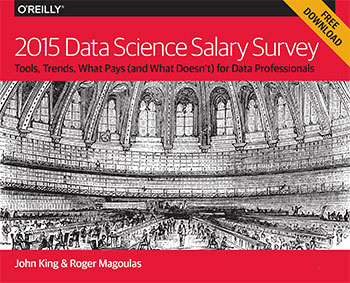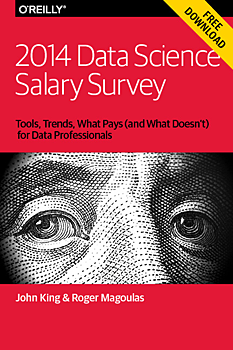John King
2015 Data Science Salary Survey
Revealing patterns in tools, tasks, and compensation through clustering and linear models.
Download the free “2015 Data Science Salary Survey” report to learn about tools, trends, and what pays (and what doesn’t) for data professionals.
Data scientists are constantly looking outward, tapping into and extracting information from all manner of data in ways hardly imaginable not long ago. Much of the change is technological — data collection has multiplied as well as our means of processing it — but an important cultural shift has played a part, too, evidenced by the desire of organizations to become “data-driven” and the wide availability of public APIs.But how much do we look inward, at ourselves? The variety of data roles, both in subject and method, means that even those of us who have a strong grasp of what it means to be a data scientist in a particular domain or sub-field may not have a complete view of the data space as a whole. Just as data we process and analyze for our organizations can be used to decide business actions, data about data scientists can help inform our career choices.
That’s where we come in. O’Reilly Media has been conducting an annual survey for data professionals, asking questions primarily about tools, tasks, and salary — and we are now releasing the third installment of the associated report, the 2015 Data Science Salary Survey. The 2015 edition features a completely new graphic design of the report and our findings. In addition to estimating salary differences based on demographics and tool usage, we have given a more detailed look at tasks — how data professionals spend their workdays — and titles. Read more…
2014 Data Science Salary Survey
Salary insights from more than 800 data professionals reveal a correlation to skills and tools.
In the results of this year’s O’Reilly Media Data Science Salary Survey, we found a median total salary of $98k ($144k for US respondents only). The 816 data professionals in the survey included engineers, analysts, entrepreneurs, and managers (although almost everyone had some technical component in their role).
Why the high salaries? While the demand for data applications has increased rapidly, the number of people who set up the systems and perform advanced analytics has increased much more slowly. Newer tools such as Hadoop and Spark should have even fewer expert users, and correspondingly we found that users of these tools have particularly high salaries. Read more…


